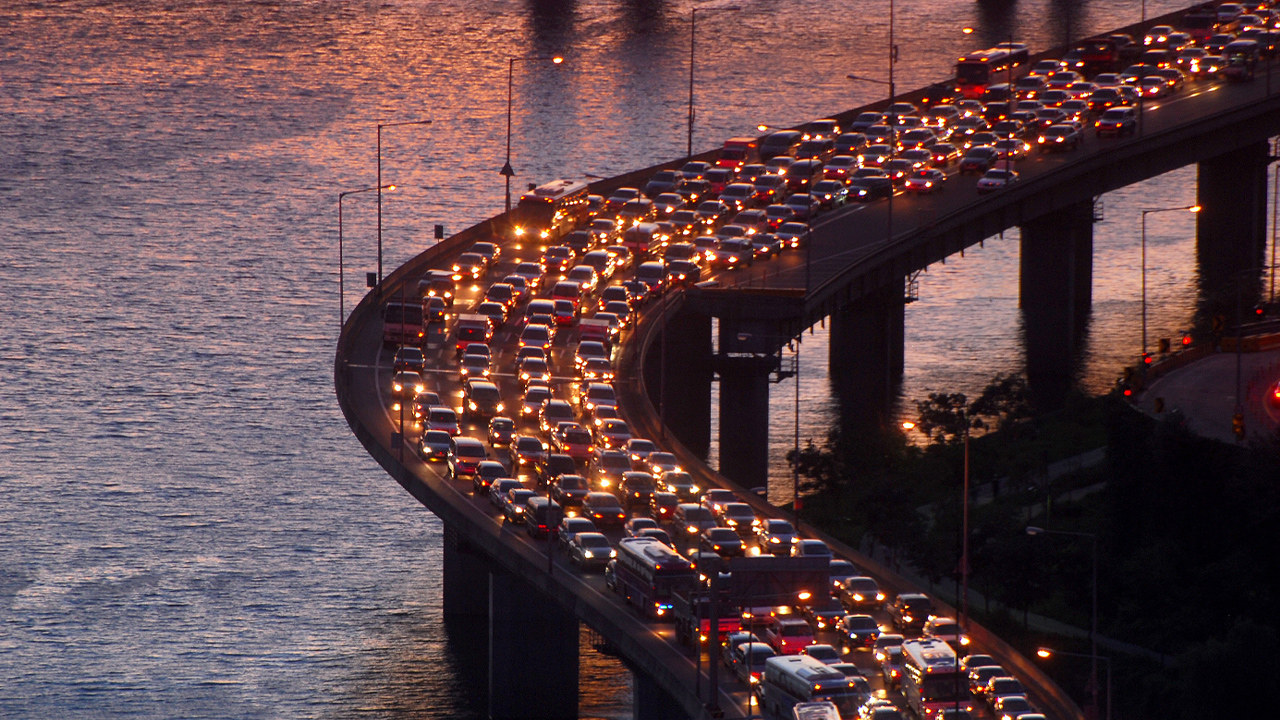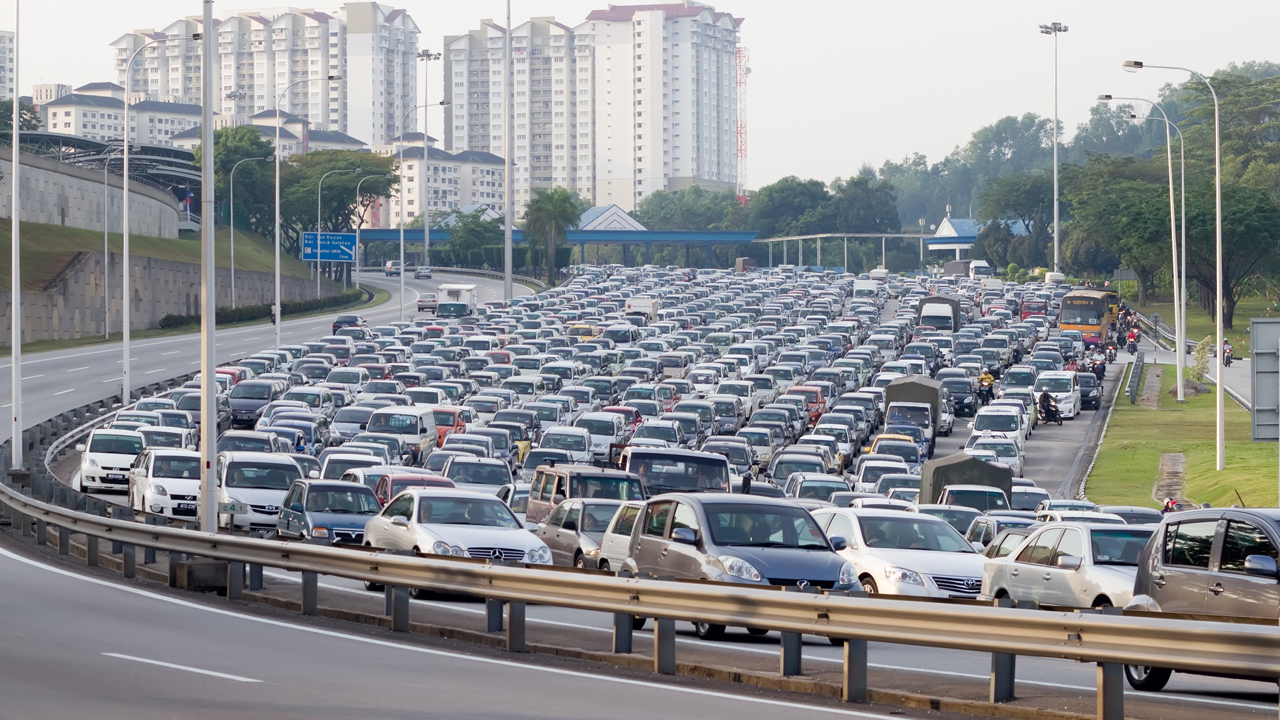1. Introduction: The Universal Language of the Honking Horn
We’ve all been there: trapped in a sea of red taillights, inching forward millimeter by millimeter. The frustration of being stuck in traffic is a universal experience, but the cost is far from trivial. For the average rush-hour driver in Bengaluru, it adds up to 117 hours lost every year. Beyond the wasted time, chronic congestion is a direct threat to public safety, where compromised ‘golden hour’ access for ambulances can be a matter of life and death, as well as a drag on commerce and our overall quality of life.
For decades, we’ve treated gridlock as an inevitable force of nature, like the weather. But what if the solutions we’ve always reached for—more flyovers, more cameras—are aimed at the wrong problem? What if traffic isn’t a force to be endured, but a design problem waiting to be solved?
2. Takeaway 1: A Tiny Fraction of Your City Causes Most of the Gridlock
The 5/50 Rule: A Few Bad Roads Cause Most of the Pain
It sounds too simple to be true, but data analysis reveals a stunning pattern known as the “Pareto Principle of Traffic.” Across cities, a tiny fraction of the road network is responsible for a massive share of the pain. It’s not the entire network that’s broken; it’s a few critical arteries. The numbers are clear: 5% of a city’s road links cause 50% of all traffic delays.
This is a powerful and counter-intuitive revelation. It reframes an overwhelming, city-wide issue into a targeted, manageable one. Instead of trying to fix everything at once, we can focus our resources on the critical few bottlenecks where they will have the greatest impact. By solving the problem for that vital 5%, we can unlock massive improvements in traffic flow for everyone.
3. Takeaway 2: The Obvious Fix is Often the Wrong One
The Real Culprit Isn’t Always a Lack of Pavement
When a major intersection is consistently jammed, the most common instinct is to build our way out of it with more concrete. Take the infamous Silk Board Junction, a chronic source of gridlock where a multi-million dollar flyover seemed like the only logical answer. Before breaking ground, a deeper data analysis was performed. It revealed the true root causes had little to do with a lack of road capacity.
The analysis uncovered two correlated factors. First, passenger exchange at a nearby bus stop was causing a flow breakdown on the flyover ramp. Second, on weekends, traffic spillover from a nearby mall’s parking was paralyzing the entire approach. A bottleneck is a symptom, and the goal is to diagnose the disease. By identifying the real sources of the problem, authorities could implement cheaper, faster, and far more effective solutions—like relocating a bus stop and creating a weekend traffic plan—preventing the waste of enormous amounts of taxpayer money on infrastructure that wouldn’t have solved the underlying issue.
4. Takeaway 3: You Can’t Fix a Traffic Jam After It Starts
The Best Strategy is to See the Future (15 Minutes at a Time)
Most drivers use tools like Google Maps to see traffic as it is right now. By the time a road turns red on the map, the jam has already formed, and it’s too late. The key to effective traffic management isn’t just seeing the present; it’s predicting the immediate future.
Modern AI platforms can analyze live traffic data to predict that a jam is forming 15 to 30 minutes in advance. This shifts traffic management from being reactive (firefighting a jam) to being proactive (preventing it entirely). The system can provide traffic managers with simple, actionable recommendations before the gridlock sets in. For example, it might suggest: “Increase green light time by 20 seconds on Ring Road exit for the next 3 cycles.” This small, predictive action can stop a massive jam before it ever begins.
5. Takeaway 4: The Smartest Upgrade is Software, Not More Concrete
We Don’t Need More Cameras, We Need a Better Brain
The traditional approach to “smarter” traffic has been to install more hardware—more CCTV cameras and on-ground sensors. This strategy is not only expensive but also slow, with deployments taking 2 to 5 years. Even then, it creates “islands of intelligence,” leaving over 80% of the road network as a blind spot.
A new paradigm is emerging: using a software-based “intelligence layer” that works with a city’s existing infrastructure. This approach adds a powerful analytical brain to the cameras and signals a city already owns, without costly and disruptive “rip-and-replace” hardware projects.
“Instead of relying on costly and fragmented CCTV cameras, we can now deliver high-frequency, citywide insights that help authorities reduce congestion and plan more effectively — all at a fraction of the cost.”
— Umang Saraf, Director of Innovation Labs at Lepton
 6. Takeaway 5: Today’s Traffic Has a Weather Forecast
6. Takeaway 5: Today’s Traffic Has a Weather Forecast
Traffic Isn’t Just Cars—It’s Rain, Cricket Matches, and Festivals
The most advanced traffic management systems understand that vehicle flow is only part of the story. To get a complete picture, they fuse Google’s live road data with external context. This isn’t just about noting a special event; it’s about anticipating the traffic chaos during a festival, a VIP movement, or after a vehicle breakdown. It’s about understanding how a coming monsoon or forecast fog will fundamentally alter traffic flow.
This is a game-changer for city authorities. It allows them to anticipate surges and disruptions before demand spikes, pre-positioning resources and adjusting traffic plans proactively. By understanding how the real-world pulse of the city will impact the roads, the entire system becomes more resilient and adaptive.
7. Conclusion: From Gridlock to Flow
For decades, urban congestion has felt like an unsolvable daily nightmare. But by shifting our perspective, we can see it for what it is: a complex but manageable design problem. A software-first, data-driven approach is finally giving city leaders the tools they need to diagnose root causes, predict problems before they start, and make smarter investments.
The ability to see, understand, and act on the health of our road networks is here. Now that we can diagnose and treat our city’s arteries, what other complex urban challenges can we solve next?

 6. Takeaway 5: Today’s Traffic Has a Weather Forecast
6. Takeaway 5: Today’s Traffic Has a Weather Forecast